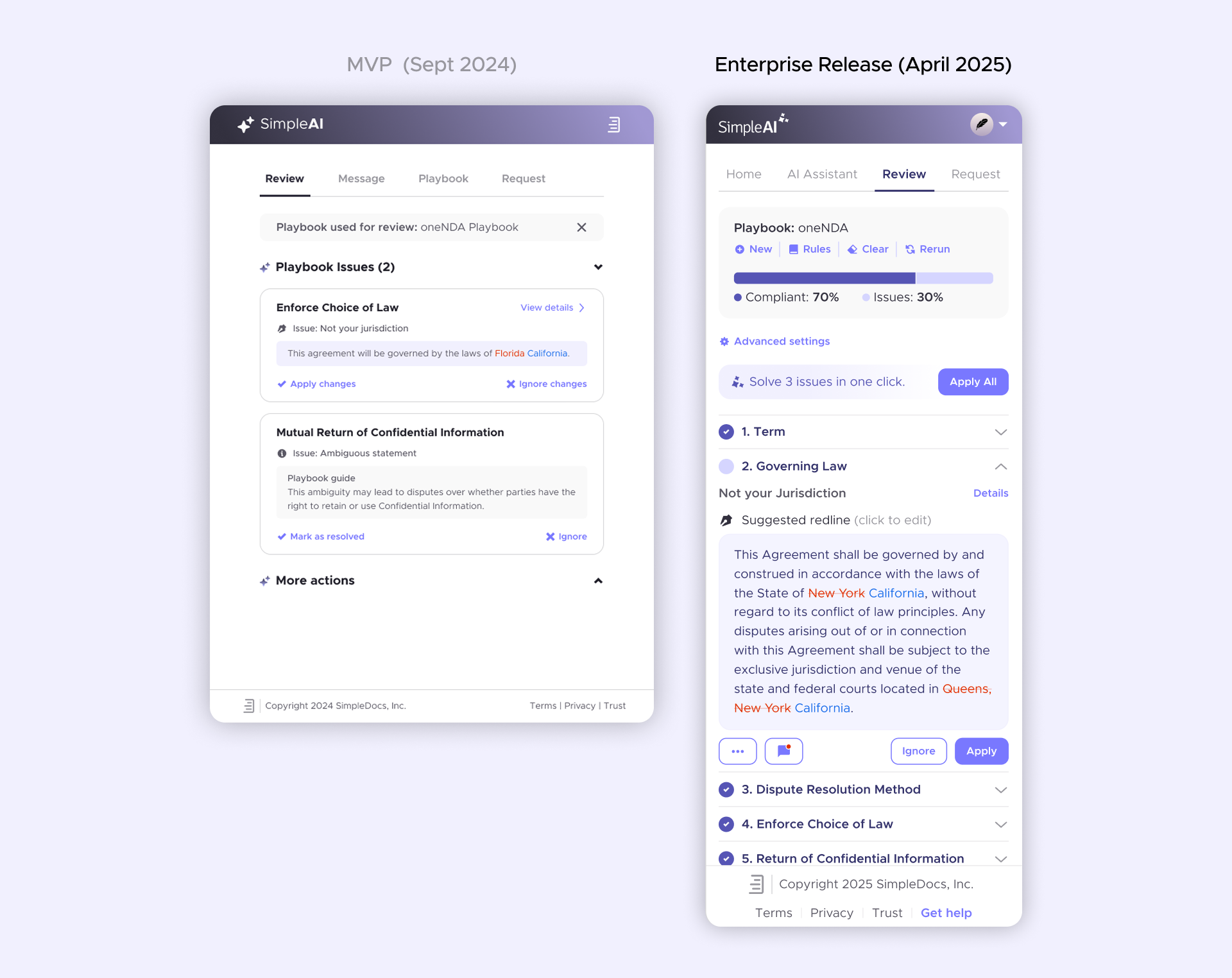Have you ever opened a Figma file and felt both physical and emotional pain?
As designers, we’ve all been there. You kick off a project with so much potential — creatively, strategically, maybe even something that could make a real impact. But then… things speed up. Fast. And somewhere along the way, that focused, thoughtful design turns into a Frankenstein’s monster: a pile of patches on top of patches. Functionality no one asked for, orphan UI elements added for one-off use cases, and user flows that feel like they were stitched together in a rush (because they were).
This is what we call UX debt — when past design choices, made quickly or without enough foresight and user research, pile up into a confusing, inconsistent, and unscalable experience.
You might already be thinking about that project or that stakeholder where decisions were rushed just to “get it out.” Or when someone insisted on reinventing the wheel just because a competitor did. So let’s talk about how UX debt happens and more importantly, what you can do about it.
How UX Debt Accumulates
- No time for foundational design
You and your team are likely stuck reacting to new ideas, shifting priorities, or market pressure, without the space to do real discovery or research. Features get designed and shipped without being fully understood. - Designing in silos
Without a clear, holistic understanding of the product vision — and someone experienced enough to guide it and confident enough to push back when needed — teams end up saying “yes” to every idea. And devs might not even fully grasp your designs, because no one has taken the time to connect the bigger picture. - Shipping over shaping
When feature-first wins out over experience-first, quality takes a back seat. You end up redoing the same flows multiple times, trying to “get it right” — but who’s to say it’s actually right if you didn’t have time to research and validate? - Missing documentation or design history
User stories, product requirements, and proper documentation exist for a reason. When they’re ignored, people start filling in the blanks on their own, and critical parts of the user journey fall through the cracks. - Too many cooks, not enough timing
Large, enthusiastic teams often mean lots of input — which can be great. But when ideas get tossed in without prioritization or strategic timing, things spiral. Teams try to please everyone, mimic competitors, or add features that dilute the experience. As they say in the kitchen: “Too many cooks spoil the broth.”
The Cost of UX Debt
If this sounds familiar, you probably already know the consequences:
- Frustration from the team and the stakeholders
- Inconsistent and fractured experiences and interfaces
- Slower development velocity due to a lack of reusable components and daily changes to the user experience
- Difficulty scaling or iterating on the product
- And perhaps the most painful of all: designer burnout

What to Do About UX Debt?
Let’s skip the usual “just make a design system” advice. You already know that’s not realistic in fast-moving orgs.
Here’s a deeper breakdown with strategies you can actually apply, especially when you don’t have the luxury of stopping everything to fix the mess:
- Document Everything
Sometimes, debt can’t be paid off right now. That’s okay, but someone will revisit it later, and they’ll thank you if it’s documented. Small things, such as comments in Figma explaining why a compromise was made and the ideal or original goal, can make a big difference when you return to that design to improve it. - Iterate Along New Work
When you scope new features or enhancements, proactively flag opportunities to clean up debt in adjacent areas. When you revisit a rushed feature, redesign a feature in the future and remember that some interactions were rushed. This is your moment to sneak in small improvements that accumulate over time without asking for extra bandwidth. - Educate Stakeholders (and Even Your Own Project Managers)
Most stakeholders and PMs understand the idea of technical debt, but rarely think about design in those terms. What’s worse, many don’t recognize UX debt unless it costs them money, users, or time. Show them with tangible data: screenshots that highlight friction points, analytics that show low engagement, and examples of good practices from other companies. Slowly, but surely, change their mindset that taking the time to do things right ultimately pays off.

In the fast-paced world of product design, UX debt is inevitable. But ignoring it isn’t. By making it visible, tackling it piece-by-piece, and getting your stakeholders on board with this approach, you can start to chip away at the debt before it builds up too much. And the next time your Figma file (or you!) feels like it’s on the brink of a meltdown, you’ll be ready to handle it, one smart move at a time.












